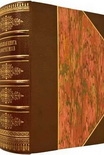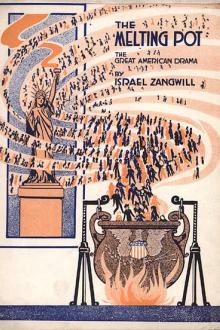No Modernism Without Lesbians, Diana Souhami [love books to read txt] 📗

- Author: Diana Souhami
Book online «No Modernism Without Lesbians, Diana Souhami [love books to read txt] 📗». Author Diana Souhami
In 1927, H.D. wrote her roman à clef HERmione, based on her life from 1905 to 1911, and ‘Halcyon’, a poem about her relationship with Bryher, was published in Poetry. ‘I am full of work and trying to keep “young” – have friends near this winter, who insist on my dancing and dancing AND dancing’, she wrote to a friend.
This oddball family had its tensions. Macpherson disparaged his wife to H.D. He warned her not to:
get caught up into the Bryher blunderbuss manner… I don’t want you to feel lost, harassed, browbeaten, separated from us, from yourself from Bryher…. Don’t be vulnerable… because she has a fort, has to have a fort, in some ways BE a fort, so must you be armed and able to fall back on simple strength reserved for protection.
Whether or not Bryher’s manner was blunderbuss, her patronage and imagination allowed them all to take a new creative direction, another break from Victorian norms and certainties, a new way of communicating.
POOL productions
The year 1927 was a transforming one for Bryher. At Territet, with Macpherson, she changed direction. Both thought film the new medium of communication. With her money and his technological expertise they started POOL Productions, a film company. Bryher explained the name, which was based on the analogy of a stone being dropped into a pool:
as the stone will cause a spread of ripples to the water’s edge, so ideas once started will go to their unknown boundary… these concentric expansions are exemplified in POOL which is the source simply – the stone – the idea… The expanding ripples from a stone dropped in a pool have become more a symbol for the growth of an idea than a simple matter of hydraulics.
With POOL Productions, Bryher’s focus turned from literary innovation in Paris to Berlin and Russia, the psychoanalytical writings of Freud, and the new realism of films about social conditions. Berlin was the film capital of Europe. Bryher was the only member of the group to speak much German. She said she ‘saw a dozen of these films in small projection rooms without music at nine o’clock in the morning and they were art and they were truth’.
In Berlin, she and Macpherson met in the Hotel Adlon with the Austrian film-maker G.W. Pabst, who was at the forefront of the German movement for ‘new realism’ in film. Macpherson wrote to H.D. about this meeting and of looking at photos ‘one of Pabst himself, young, very very very very Lesbian, and he is Deeeeellllllighted to mit you’.
Bryher was affected by Pabst’s film Joyless Street, about inflation in Vienna and poverty in the middle class. She saw the film as an indictment of the treatment of women and of the soulless Weimar era. It starred Greta Garbo before Hollywood consumed her. H.D. called the film her ‘never to be forgotten premiere to the whole art of the screen’.
Switzerland, set in the heart of Europe, was the perfect place for POOL’s headquarters. Bryher rented a studio near Lausanne, spent $4,000 on the best cameras, Klieg carbon-arc close lamps, a projector and other equipment. She was the producer, Macpherson the director and they, H.D. and friends scripted, acted in and improvised the films they made. The company became a vehicle to explore afresh in another medium the modernist ideas and lifestyle that guided them all.
In February they made the first of their films, Wing Beat, inspired, Bryher said, by the play of light on Lake Geneva. The wild dancing figure of H.D. elided with shifting light, the flight of a bird and the movement of water. Their advertisement for it read:
Free verse poem. Telepathy and attraction, the reaching out, the very edge of dimensions, the chemistry of actual attraction, of will, shivering and quavering on a frail, too high, too inaccessible brink.
They aspired to change the direction of British film, to make film magical. Macpherson was ‘scornful of the obvious lighting in most American films’. Bryher said he achieved wonderful effects with shadow and half-lights. Pabst, impressed with Wing Beat, said H.D.’s performance ‘showed up the utter futility of the Hollywood tradition and that beauty was something quite different’.
Bryher delighted in ‘the glory of escape through another medium’. She loved the innovations of technology. She acquired a car, a Buick ‘with special hill-climbing devices’. Flying exhilarated her and in May 1927, when in Venice with Macpherson, she saw a return flight to Vienna advertised. She booked them on it and took with her a letter of introduction to Freud from Havelock Ellis. There were six other passengers on the plane and they flew into a storm. They had two days in Vienna and she sent her letter round by messenger to Freud’s house at Berggasse 19:
We were invited to call the next afternoon… We were taken into the famous room with the statuettes and the chow. The dog approved of Kenneth, another element in our favour. Freud sat behind his desk, I recognised him from the photographs but what they and reports about him had lacked was his gaiety. He asked us several questions about Ellis whose courage as an investigator he admired, but then an amazing life came into his eyes as he questioned us about flying: Why had we chosen to come by air, what did it feel like, how high had the pilot taken us, what did a landscape look like from above? We told him about the storm and the strange impression that we had had of seeing lightning sideways and I knew that he wished that he had been with us.
Close Up
Bryher also rented an office space near the film studio in Lausanne. There, she, Macpherson and H.D. started a subscription magazine, Close Up, ‘to meet the need of those interested in the artistic and educational development of the cinema’. It ran from July 1927 to December 1933, at first monthly, then quarterly, with 500 copies for each





Comments (0)